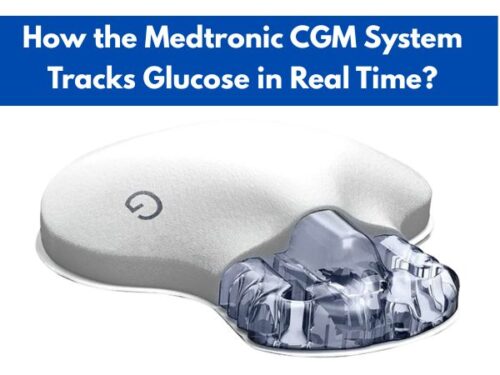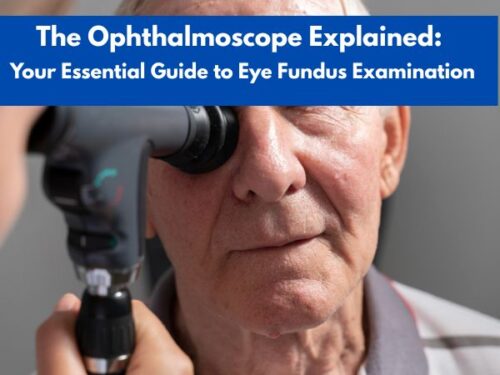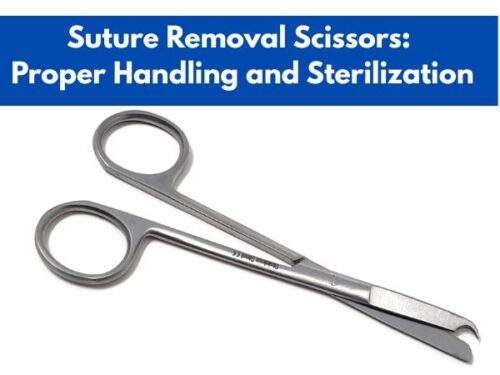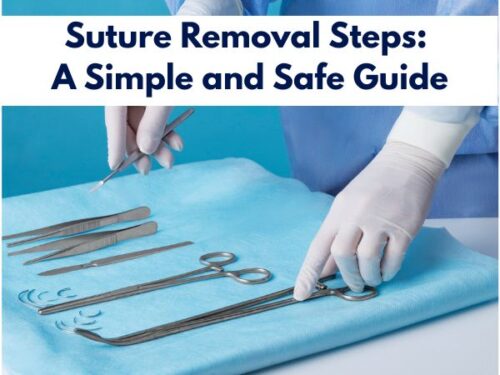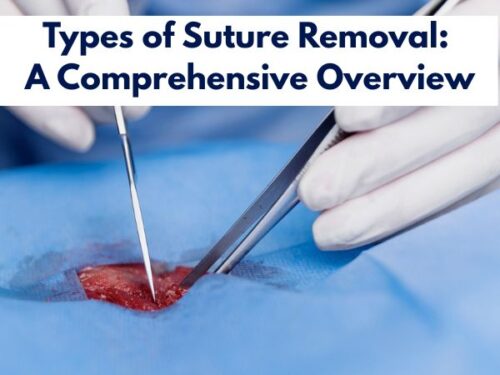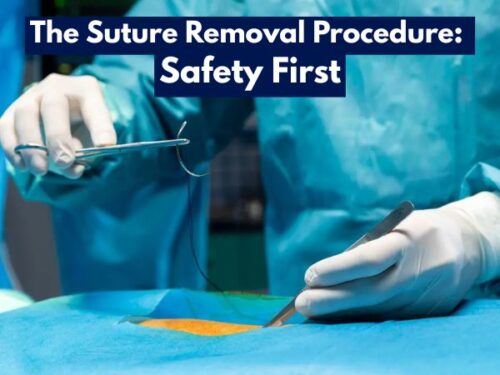How to Use an Otoscope: Step-by-Step Instructions for Accurate Ear Examinations
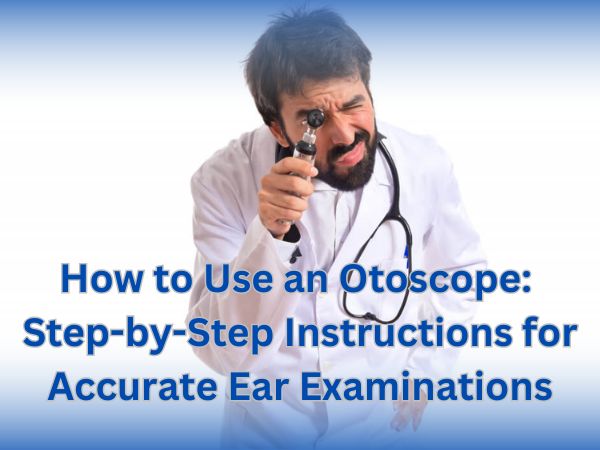
Have you ever felt severe pain in your ears? If yes, you must have been examined by a doctor using an otoscope. An otoscope is a non-invasive diagnostic tool that is used to visualize the internal structure of the ears. The instrument shines a light on the tissues that help evaluate the presence or absence of an ear disease. While in medical practice, learning how to use an otoscope is essential as it is considered an important part of the general physical examination instruments. Furthermore, an otoscope can also be used at home.

Using an otoscope is easy for the doctor and painless for the patient
In this article, let us learn how to use an otoscope as a step-by-step has been presented. In addition, some of the quality brands of otoscopes have also been linked for the reader’s convenience.
How to Use an Otoscope for the Diagnosis of Ear Infections?
Before diving into the step-by-step guide on using an otoscope, it’s important to note that we’ve previously discussed how to choose the right otoscope in an earlier blog post. Now, let’s focus on how to use it effectively:
Prepare the Otoscope
The first step of learning how to use an otoscope is to know when an otoscope is ready to be used. Take out your device and examine it to check if it is in working condition. Examine the magnifying lens as well as the light source.
If any component is not working, replace the otoscope with a new one. Sometimes, the light source provides a dim light. This indicates that the device has a low battery and needs charging. You can also replace the batteries.
Select a Suitable Speculum
The speculum or the tip of the otoscope comes in different sizes. A suitable tip is the one that is chosen depending on the patient’s age. In general, the following sizes are suitable for the respective age groups:
| Age Group | Speculum Size (Millimeters or mm) |
| Adults | 4 to 6 mm |
| Children | 3 to 4 mm |
| Infants | 2 mm |
Prepare the Patient
The next and arguably one of the most important steps while learning how to use an otoscope is to prepare your patient. Despite not being invasive, an otoscope tip called speculum might feel uncomfortable to some patients.
Furthermore, the high light intensity of the device can increase the temperature in the ear canal. As a result, the patient may feel a slight burning sensation. In addition, most patients feel dizziness after an otoscopy.
Therefore, it is important to let the patient know about these things before starting the procedure. Address all of their questions and make sure that they are relaxed.
Straighten the Ear Canal
Now, while learning how to use an otoscope, ask the patient to sit upright and tilt their head in the opposite direction to the ear being examined. Hold the outer ear and gently pull it up and then back. This helps straighten the patient’s ear canal that renders the examination easy.
In case of infants and children below the age of 3, the outer ear needs to be pulled down and back to achieve the right position of the ear canal.
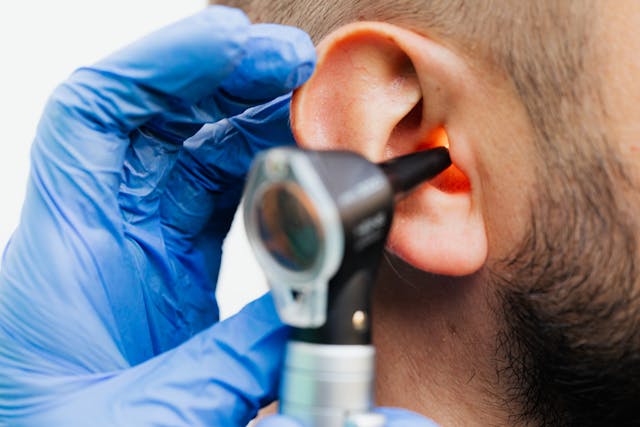
Otoscopes are handheld devices that are portable and come in rechargeable options
Hold the Otoscope and Position your Hand
Take your otoscope and hold it in your dominant hand like a pencil. Use your thumb and index finger to control the device. While holding the otoscope, rest your hand on the patient’s head or cheek. This will provide stability to your hand.
Moreover, some patients start moving when the otoscope is inserted in the ear canal. This can cause injuries that can be avoided by pressing down your hand on the patient’s head to stop the abrupt movements.
Insert the Otoscope
Now, gently insert the otoscope into the ear canal. While learning how to use an otoscope, remember not to apply too much pressure on the device while inserting. Ideally, the speculum should reach the outer third of the ear canal. This measures up to 1 to 2 centimeters (cm) or 0.4 to 0.8 inches.
Examine the Outer Ear
Once the otoscope is positioned, the next step while learning how to use an otoscope is to do the ear examination. Look for the general symptoms of ear infection like swelling, redness, bulging, perforation, earwax buildup, pus, or any discharge, etc. In addition, any foreign object can also be present if the patient is experiencing pain.
Remember that a healthy ear tissue will not show any of these signs. Rather, it will look greyish or pearly white with a translucent appearance.
Also, inspect the eardrum for its movement. This can be done by using a pneumatic otoscope that can blow air into the ear canal to vibrate the eardrum so that the physician can check its condition.
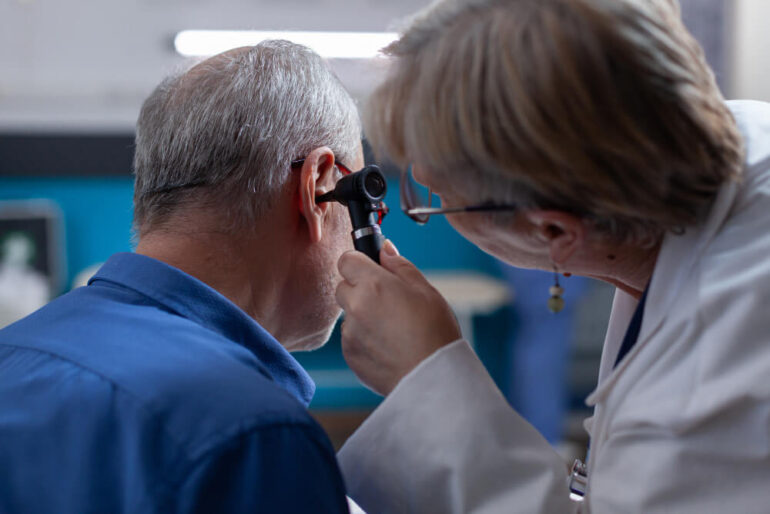
Ear examination using an otoscope is the part of physical examination
Remove the Otoscope
Once the examination is complete, gently take the otoscope out of the ear canal. Once the device is out, remove your hand from the patient’s head or cheek and release the ear. Ask the patient to move slowly as the risk of dizziness is always present after an otoscopic examination.
Maintenance of an Otoscope
While learning how to use an otoscope, it is also important to learn the importance of cleaning the otoscope thoroughly. This is essential because infections can get transferred from one person to another through an uncleaned examination device.
Dispose of the speculum after a single use and wipe the otoscope using a suitable disinfectant solution. If the speculum is reusable, scrub it with hot water. This will remove the earwax from the tip. Once cleaned, soak the speculum for 10 to 15 minutes in rubbing alcohol in a covered dish to kill germs.
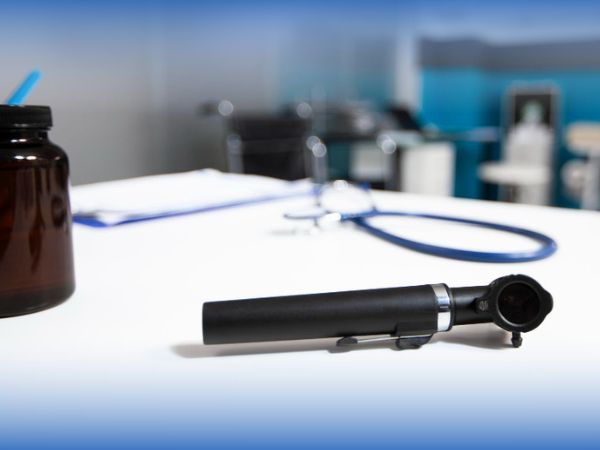
Different sizes of speculum are available for examining patients from different age groups
Otoscopes at Health Supply 770: Features and Specifications
Otoscopes are ear examination devices that are noninvasive. These ensure that the procedure is painless and completely safe. Otoscopes are widely employed in healthcare facilities for diagnosing ear infections or diseases but can also be used at home for an initial visualization of the ear in case of an ache.
While learning how to use an otoscope, it is good to go through some of the well-known brands that are available in the US market. Some of these otoscope brands are also available at Health Supply 770 and have been detailed below along with their features and purchase links:
Welch Allyn Diagnostic Otoscope – With LED 250-2
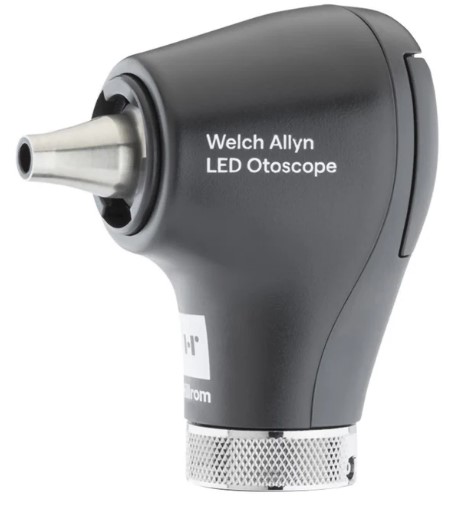
Welch Allyn Diagnostic Otoscope – With LED 250-2
US$250.88
Product Details
Welch Allyn 250-2 diagnostic 3.5 Volts otoscopes are highly durable and long-lasting ear examination devices. These handheld otoscopes have high efficiency and can be employed for years to come once purchased. The LED light source ensures that the product provides the required intensity of light to visualize the internal structures of the ear.
Moreover, these Welch Allyn 250-2 diagnostic otoscopes are easy to use and maintain to avoid the risk of infections. While learning how to use an otoscope, these are one of the best products to start and invest in. The reliability of these otoscopes can be estimated due to the fact that these are often used in healthcare facilities.
Welch Allyn Pocketscope Jr. Otoscope with Aa Handle, Pocket Clip 22840
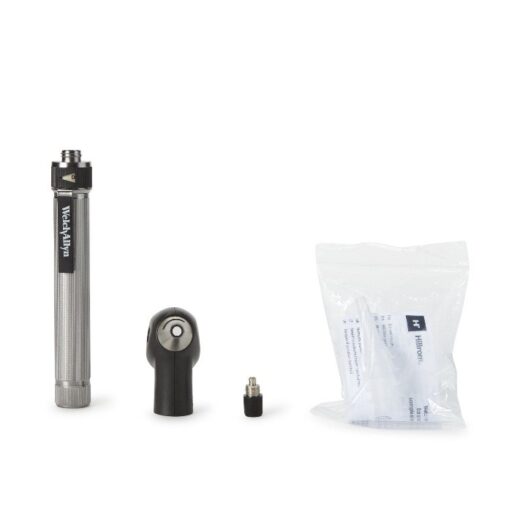
Welch Allyn Pocketscope Jr. Otoscope with Aa Handle, Pocket Clip 22840
US$74.88
Product Details
Welch Allyn pocketscope Jr. Otoscope with Aa handle is another Welch Allyn product that is budget-friendly and portable. Its small size and lighter weight are two of its best features. While learning how to use an otoscope, keep in mind that the product should be small enough to be carried around and should be helped with ease. Considering this, the dimensions of these Welch Allyn pocket scope jr. otoscopes have been kept at 3.94 x 3.94 x 3.94 inches which facilitates the users.
25020L 3.5V SureColor LED Diag Fiber-Optic Otoscope, Reuse Spec
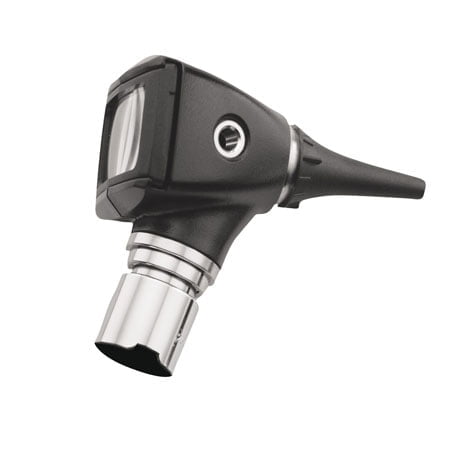
25020L 3.5 V SureColor LED Fiber-Optic Otoscope
US$171.57
Product Details
25020L 3.5V SureColor LED diag fiber-optic, pneumatic-enabled otoscopes come with a 3.5 Volts LED light source for illumination. This glare-free light enables the healthcare provider to look inside the patient’s ear with minimum trouble. This way, the procedure becomes quick and highly accurate.
In addition, these SureColor LED diag fiber-optic otoscopes are also affixed with a fiber-optic feature to prevent the temperature in the internal ear from rising that can cause discomfort to the patient during examination.
Furthermore, while learning how to use an otoscope, the sizes of the specula that come with the device are also important. With these 25020L 3.5V SureColor LED diag fiber-optic otoscopes, four different kinds of tips are provided that are 2.5 mm, 3 mm, 4 mm, and 5 mm in size. Therefore, the device can be employed for all age groups by choosing a suitable speculum.
KaWe Combilight®️ C10 Otoscope with 3X Magnification #20-850-000
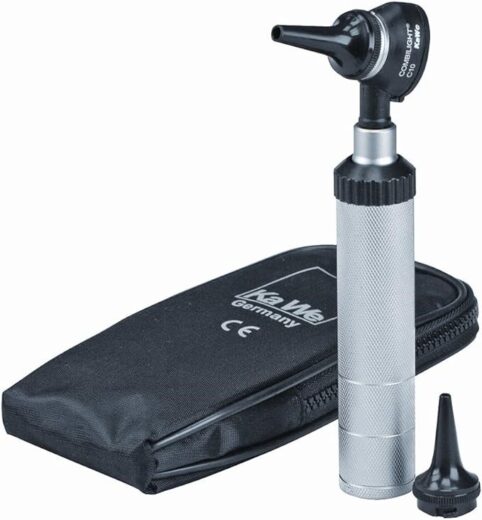
KaWe Combilight®️ C10 Otoscope with 3X Magnification #20-850-000
US$184.88
Product Details
KaWe Combilight®️ C10 otoscopes are one of the finest otoscopes in the market. These have a viewing lens of up to 3X that enables the healthcare provider to view the interior ear tissues with ease. The light source is bright and does not product glare that often minimizes vision. Furthermore, the product also has a dimmable rheostat that allows the adjustment of light intensity to achieve better focus.
In addition, these KaWe Combilight®️ C10 otoscopes can help inspect the state of the eardrum by blowing a puff of air into the ear canal. This feature makes them pneumatic otoscopes. While learning how to use an otoscope, keep in mind that these KaWe Combilight®️ C10 otoscopes have specula that can be cleaned and reused multiple times.
Moreover, the different sizes of these tips allow the device to be employed in patients belonging to different age groups. Over all, the product is excellent in efficiency, high in durability, as well as non-irritant as it is completely free from natural rubber latex.
Welch Allyn 71050-C Otoscope Handle
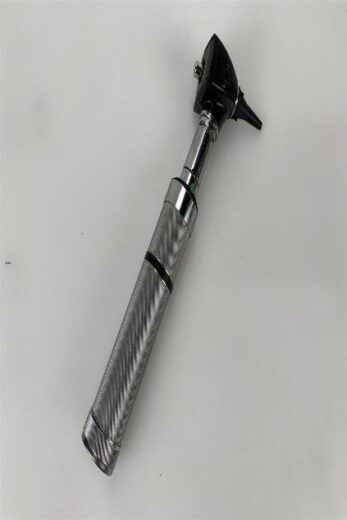
Welch Allyn 71050-C Otoscope Handle
US$120.62
Product Details
Welch Allyn 71050-C otoscope handle is a rechargeable device that can be attached with all the 3.5 Volts instruments heads. It provides the base and stability to the devices as they can now be held firmly. The product is lightweight and comes in silver color.
While learning how to use an otoscope, remember that it needs a handle to mount on. Here, these brass finished and chrome-plated Welch Allyn 71050-C otoscope handles come into play. The device is 3.5 Volts battery-operated and has high durability.
Welch Allyn PocketScope Otoscope with Throat Illuminator 22821
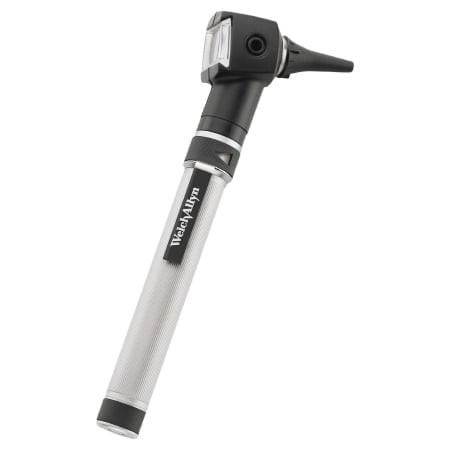
Welch Allyn PocketScope Otoscope with Throat Illuminator 22821
US$198.88
Product Details
Welch Allyn PocketScope otoscope with throat illuminator is a type of otoscope that is employed by otolaryngoloists to examine the condition of the ear as well as throat. These devices come with a light source that can illuminate the throat area and indicate any signs of infection.
While learning how to use an otoscope, this product should be chosen because of its versatility. These Welch Allyn PocketScope otoscope with throat illuminators use a 2.5 Volts halogen HPX as their light source. The product is battery-operated and therefore rechargeable.
*Note: The prices mentioned in the article are taken from the Health Supply 770 website. These may vary over time.
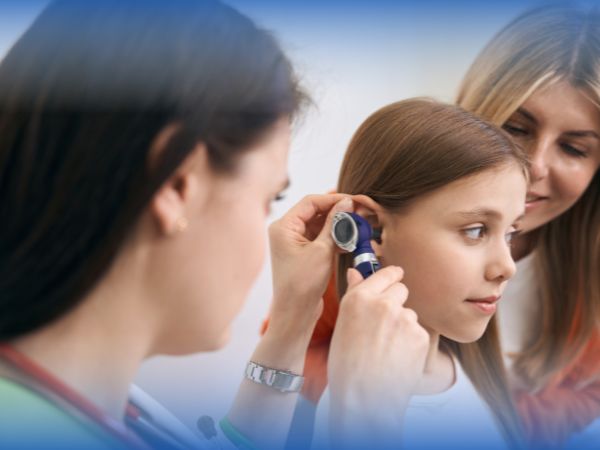
Otoscopes are suitable for patients belonging to all age groups
The products mentioned in this article while learning how to use an otoscope, along with many other medical supplies, can be purchased from Health Supply 770, a reliable name when it comes to medical products. They have a 30-day money-back guarantee and provide your products to you in the shortest possible time. Click the link at the end of the article to check the wide range of otoscopes.
Conclusion
Otoscopes are the devices that are used when there is need to examine ears. These fall into the category of essential equipment needed for primary physical examination. Otoscopes indicate if there is a problem in the ear canal or eardrum.
To learn how to use an otoscope, it is important to go through the step-by-step instructions given in the article to maximize the efficiency of the procedure. In addition, risks can also be minimized. Otoscopes are safe devices but, in some cases, these can cause damage to the ear canal if too much pressure is applied or the device is inserted or withdrawn abruptly. Rather than this, otoscopes are noninvasive and non-risky medical items.
Due to their importance, it is good to have an otoscope at home as well to do an initial ear examination. Apart from this, their essentiality in medical facilities is undeniable. For purchasing different otoscope brands, reliable vendors like Health Supply 770 should be approached. They ensure the provision of quality products along with satisfactory services.













